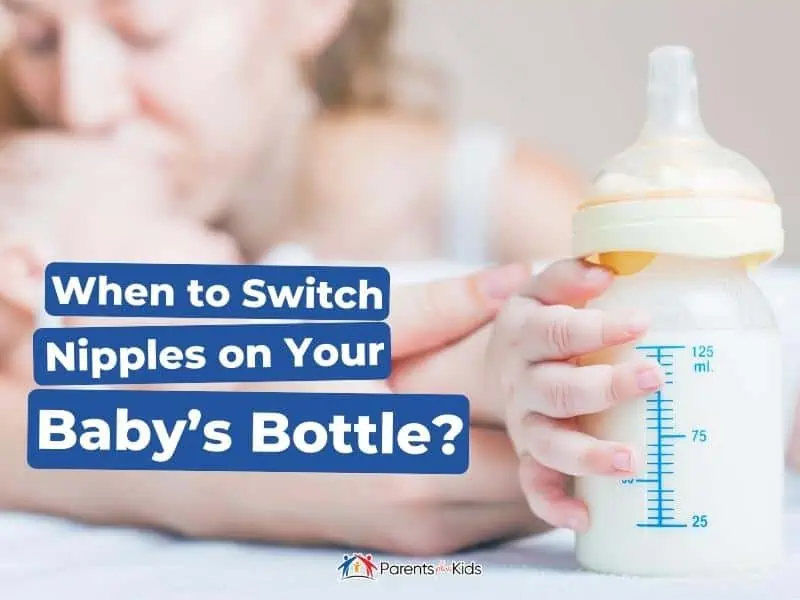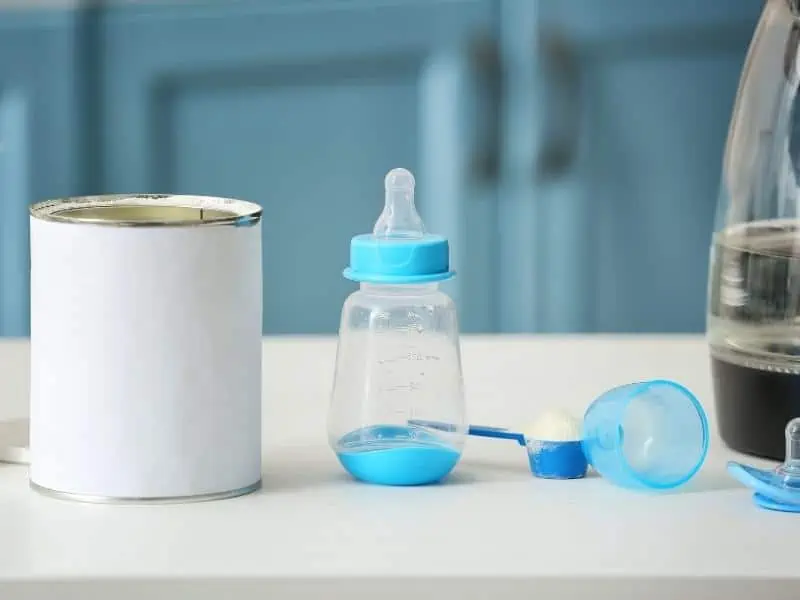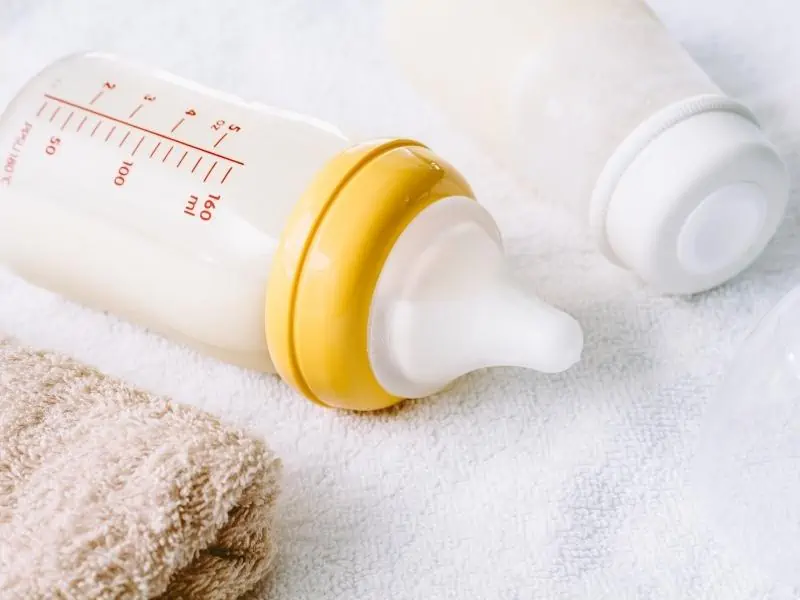When to Switch Nipples on Your Baby’s Bottle?

This post may contain affiliate links. If you buy through the link, I may earn a commission. Learn More.
You probably didn’t know there are different levels of flow speed on nipples before you had a baby.
Now, it’s one of those topics that is both deeply fascinating and terribly confusing.
When do you change nipples? Do you have to follow the manufacturer’s recommendation? Why?
*FYI, some of the links in this article about when to switch to faster flow nipple may be affiliate links. If you click and make a purchase, we may get a commission (at no extra cost to you). For more info, please see our disclaimer.
When to Switch Bottle Nipples for the Best Flow
Bottle nipples come in different sizes with varied textures. They also have different hole sizes to allow your baby more or less flow. Some babies want a very slow-flow nipple. Others need to guzzle their milk or formula as quickly as possible. When to change is entirely up to you.
A Guide to Nipple Levels
Each manufacturer has its own levels for nipples.
You will want to consult with your favorite manufacturer’s website to make sure you know which levels are available and may be appropriate for your child.
As always, no medical advice is being given. For up-to-date medical recommendations, please see your child’s pediatrician.
Premature
Most nipple manufacturers have a nipple that is specifically for premature babies.
These babies need a very slow flow because their bodies haven’t yet developed to the point that allows them to swallow properly.
Some older babies might use premature nipples if they prefer slow feeding.
Level One
This is the level that most babies start with. It has a slow flow that’s created for babies who can swallow but are still learning.
Level Two
Level two nipples are usually recommended for babies aged three months and up. The level two nipple has a faster flow. It also allows room for thicker liquids. A more advanced formula might require the use of a level two nipple.
Level Three
With a larger opening than a level two nipple, level three nipples are generally suggested for babies ages six months and up. They are particularly useful for babies who drink quickly, eat solid foods, and sit up on their own.
Level Four
Level four usually has the largest nipple opening. These are made for older babies who will soon be weaned from bottles.
A y-cut nipple is just what it sounds like: Instead of having a circular opening, it has a Y-cut.
These nipples allow for thicker liquids to pass through. They are ideal for milk and formula that has been thickened with cereal.
When to Switch

Start your baby with a nipple recommended for their age per your pediatrician’s directions.
Watch as your baby uses the bottle. If they are happy and satisfied with the nipple they have, there is no reason to take action.
Babies need to switch to a larger nipple when they’re taking a very long time to eat.
My son would get frustrated with his bottle, cry, and sometimes push it away if the milk wasn’t coming through quickly enough. If you see this happening, it might be time for a change.
Even a younger baby might need a nipple with a faster flow.
Make sure you only move up one level at a time and watch your baby closely when they start using the nipple to ensure it is the right fight.
Babies sometimes need a slower flow nipple than the one they have.
You can tell it’s time to switch to a slower flow if they’re making loud gulps, choking on the milk, coughing a lot, and/or milk drips from the sides of their mouth as they’re drinking.
Hard swallowing is another sign that the milk is coming too fast, and they need a slower flow nipple.
When Nipple Size Isn’t the Issue

Your baby might seem unhappy with the nipple even after you switch. This could be because of the shape of the nipple and not the flow.
We tried about a dozen different nipples for my son before finding the one he preferred. Playtex nipples were the ones that worked for him.
- Most like mother
- Standard surface area to mimic average nipple sizes
- Compatible with all Playtex bottles: Playtex ventaire and Playtex nurser with drop ins liners
Others might prefer Dr. Browns, Nuk, Enfamil or one of many others that are on the market.
My daughter was a bit different. We tried every type of nipple we could find with multiple different flows. She refused all of them. Nipples don’t matter when your baby refuses to take a bottle.
Key Takeaways
Changing nipples tend to happen on your baby’s schedule, not when the manufacturer suggests.
Have you researched different types of nipples? What kind does your baby prefer? Tell us about it in the comments!
Have You Read These Yet?
- Do Diapers Expire?
- Pack N Play vs Crib
- How Do I Get My Baby to Sleep Without a Pacifier?
- Can You Return Baby Formula?

